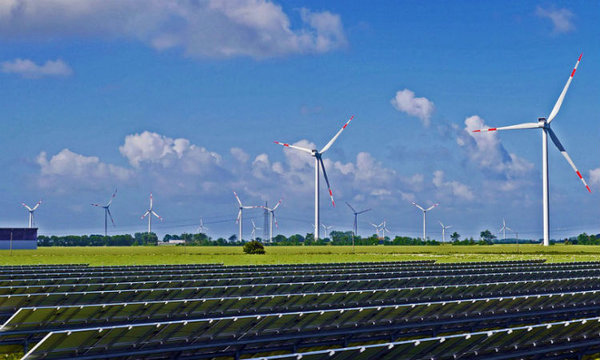Renewable energy is gaining ground. In some places, though, it may be gaining too much too fast. The infrastructure isn’t able to handle the large amounts of added energy from renewables, in countries like China and Germany.
Germany is producing a lot of renewable energy. It’s generating so much, in fact, that the government has had to begin paying wind farm owners to reduce the amount of power they produce because the grid is already at 100% capacity. The country’s German federal network agency may cut its wind power plans by as much as half due to the limitations of the electrical grid.
China has been building a lot of coal-fired and renewable energy generating facilities in recent years. They have so many that they can’t run them both at the same time. Because coal plants take a while to turn off and on, the country’s wind turbines end up not running as much as 15% of the time. In some areas, up to half of the solar energy generated can’t be used.
Difficulties With Transitioning to Renewable Energy
As seen in Germany and China, infrastructure limitations are a major barrier to renewable energy deployment. Since renewable energy is relatively new and works more intermittently than other forms of energy, it can be difficult to incorporate into the grid.
Installing and operating renewable technology requires training. Plus, because the permitting process is new, it can be confusing and inconsistent. Customers, too, need to be educated about the options that renewables may provide them.
Siting renewable energy can also be a challenge because it requires specifics environments, such as adequate wind and sunlight, to function properly. Transmission and distribution infrastructure then needs to be constructed to get this energy to the grid, which can add to the energy’s cost.
Renewable energy also faces some market barriers. Because the technology is new, financial institutions may perceive it as risky and be less likely to invest. Renewables may also be charged high transmission costs. They’re often charged for their maximum capacity outputs when, in reality, they often produce less than that. It can also be difficult to predict output levels in advance, which can result in penalties if predictions are wrong.
The market doesn’t account for the benefits the whole public enjoys as a result of renewable energy use like cleaner air and new jobs. In addition, renewable energy companies pay higher taxes and receive less research and development funding than other types of energy resources.
How to Transition to Clean Energy Smoothly
Facing these transitional challenges may seem difficult, but it is doable. People have proven that they will purchase renewable energy, even if it’s somewhat more expensive than other types.
In order to make this a smooth transition, there needs to be more awareness of the capabilities and requirements of renewable energy. Customers will need to learn about new options and workers will have to be trained.
Investors, researchers, government officials and energy industry executives must also learn more about the technologies so that they know how to best manage them. In order to level the playing field, the government must equalize funding and tax requirements and work to clarify the permitting process.
Renewables are sometimes charged more for the cost of integrating them into the grid, whereas coal and nuclear are not. Instead of charging renewables extra, making some adjustments to lower the cost for everyone will make the transition to clean energy smoother.
Operators should manage the variability of renewables using statistical probabilities, the same way they handle the possibility of outages. It is difficult to know for certain how much energy a renewable energy resource will produce at a given time, but using probabilities can help.
Continued research, development and deployment of advanced technologies will also help. Smart technology that can monitor energy use gives grid operators a more accurate and complete picture of current energy supply and demand. Currently, generators are allowed to change the amount of energy they send to the grid every half hour to hour. Shortening that time would lead to significant variability.
Providing adequate energy has always presented challenges. With the new technologies that are available today, new opportunities, as well as new difficulties, arise. Although the transition may seem problematic, the benefits are well worth it.
Consumers can help move the transition forward by learning more about renewables and purchasing renewable energy when possible. As a country and a planet, we need to invest in new technologies, work to increase grid flexibility and be open to new ideas if we are to navigate the move to a more renewable energy generation mix smoothly.

This Women of Green guest blog is by Megan Ray Nichols. Megan writes about many environmental topics including, renewable energy, conservation and sustainability. She invites you to join the discussion on her own blog, Schooled By Science.
Women of Green is TURNING UP THE VOLUME of the feminine voice on the planet in order to create the world we know is possible.
